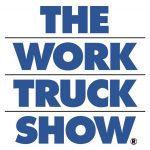LATRES JARRETT
When it comes to work trucks, tires are top of mind. As a fleet owner, you know the price of replacing tires is a major expense. What are the alternatives? How can a wear item be less of a burden to the bottom line? Enter the technology of retreading. To explain the importance of retreading and how the process adds value to your business is LaTres Jarrett, the marketing director for Bandag, the business of Bridgestone dedicated to the research, development, and manufacturing of premium retreaded tires.
MWS: WHY IS RETREADING IMPORTANT FOR FLEETS? HOW DOES IT ADD VALUE TO THEIR BUSINESS?
JARRETT:
Retread tires are one of the greatest innovations in the tire industry. They provide commercial fleets with a reliable, cost-effective, and sustainable option to proactively manage their tire assets. Retreads have been shown to extend the life of original truck tire casings and provide fleet operators with a lower cost-per-mile solution over time.
Beyond initial cost, retreading encourages fleets to better manage their tire assets overall. In general, fleets that use retreaded tires tend to do a better job of protecting and caring for tire casings to ensure they can be retreaded. Greater attention to good tire care practices helps to improve wear performance and fuel economy for the fleet, and it can help reduce costly road calls and unplanned downtime, thus adding to overall profitability for the fleet. In fact, some of the Bandag FuelTech retreads have outperformed best-in-class new tires in terms of fuel efficiency (www.americamovesbytruck.com).
Premium retreads in the market, such as Bandag, are engineered for safe and reliable performance. Some of the world’s largest fleets include retreads in their tire program.
From an environmental standpoint, as well, retreading adds great value to the commercial trucking industry. They require fewer raw materials and up to 68% less oil to manufacture than new tires. Premium retread brands retread more than 15 million casings every year, keeping more than 1.5 billion pounds of tire waste out of the waste stream (www.retread.org/learn-more).
MWS: HOW IS BANDAG CONTRIBUTING TO THE RETREAD INDUSTRY, AND WHAT NEW TECHNOLOGIES ARE YOU WORKING ON?
JARRETT:
In 1957, Bandag pioneered the commercial truck tire pre-cure retreading process. Since inception, Bandag has dedicated resources to the research and development of premium retreads and provided enhanced commercial retread solutions for multiple tire positions and applications. From the introduction of tread patterns designed to deliver lasting wear and improved traction to offering an all-position tire in the waste industry, Bandag has been at the forefront of retread industry innovation. Not to mention advanced compounding to achieve some of the lowest rolling resistant and longest wearing tires in the industry, new or retread.
Today, the business continues to lead the industry globally with more than 70 premium product offerings that help keep fleets on the road as safely, efficiently, and economically as possible. Bandag offers our fleet customers a sophisticated retread monitoring and management technology, BASys. We recommend a rigorous 150+ point inspection for all Bandag facilities. We also manufacture advanced shearography technology that allows for highly detailed inspection of casings.
Bandag is the only vertically-integrated retread system in the industry, which enables seamless retreading process. We will continue to work on innovative technologies and methods to make retreading more efficient and productive to retreaders and ultimately for the end users.
MWS: HOW DOES BANDAG SUPPORT ITS DEALER NETWORK TO PROVIDE BEST SERVICES TO THE END USERS?
JARRETT:
Backed by Bridgestone, the world’s largest tire and rubber company, Bandag dealers are experts at customizing retread programs for individual fleets to maximize their tire assets to achieve the lowest tire costs. These dealers can customize tread patterns, casing specifications, casing brand analysis, and tire/retread rotations for each fleet. The specifications can then be programmed into the Bandag tire management system, BASys, to help ensure these fleet specs are adhered to across Bandag dealer locations.
Many Bandag dealers offer additional services to help fleets manage their tire programs by providing valuable data that’s collected through the Bandag tire management system and through ongoing services such as fleet inspections, yard checks, out-of-service-tire-analysis (OOSTA), tire testing/evaluation, consultation, mounted wheel programs, trailer inspections, and scheduled air checks. Bandag dealers can provide the necessary expertise and programs, no matter how small or large a fleet’s needs are.
MWS: BANDAG LAUNCHED A NEW CAMPAIGN LAST YEAR, BUILT FOR BETTER. HOW DO YOU PLAN TO TAKE IT FORWARD IN 2018?
JARRETT:
The Bandag Built for Better campaign, launched in 2017, is aimed at educating fleets and the public-at-large on the merits of retreading through a specific focus on three pillars: reliability of Bandag retreads, profitability for our fleet customers, and sustainability for all.
We are educating fleets on how to get the most out of their tire assets. Many of our most cost-efficient customers retread their tires with Bandag, on average, at least two times per casing. In some instances, it has been shown that they drive more than one million miles on a single casing, all while achieving uptime that is equivalent to or better than the industry average. Our internal testing has shown that the use of Bandag retreads coupled with a strong maintenance program can allow fleets to maintain a tire cost per mile that is less than half of the industry average. Quality tires are built to be retreaded multiple times, and many fleets forgo major cost savings opportunities with new-tire-only programs or unnecessarily limited retread specifications.
We are also working with our dealers, customers, and experts to educate the industry about the reliability of a premium retreaded tire, which several studies have indicated is comparable to a new tire.
Lastly, through the Bandag Built for Better campaign, we intend to demonstrate that retreads have great environmental value as well. From saving more than 200 million gallons of oil and more than 1.5 billion pounds of material per year to supporting tens of thousands of jobs at Bandag and at our dealers, we believe retreading is the best option for fleets who want a positive economic and environmental impact.
We plan to continue these efforts in 2018 as well.
FOR MORE INFORMATION:
Find out more about Bandag, the business of Bridgestone dedicated to the research, development, and manufacturing of premium retreaded tires, visit www.bandag.com.
_______________________________________________________________________
MODERN WORKTRUCK SOLUTIONS: JANUARY 2018 ISSUE
Did you enjoy this article?
Subscribe to the FREE Digital Edition of Modern WorkTruck Solutions magazine.
![]()




